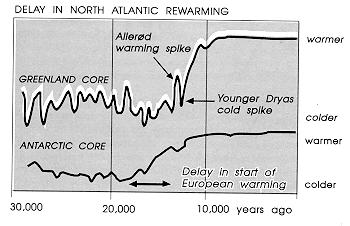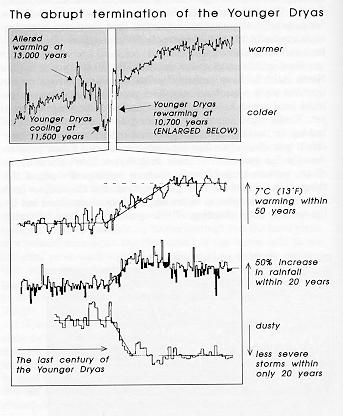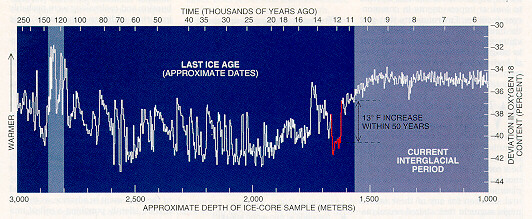|
THIS AFTERNOON I heard several commonplace
examples of mode-switching behavior as I was reading in the
library. First, because the sailboats tend to turn around when
they get close to this shore, I heard sails flapping and looked
up to see a large sailboat as it was turned into the wind.
Anytime a sailor tries to sail too close to the wind’s direction,
the sails start flapping from one position to another ("luffing").
Sometimes the boom even swings across the centerline when
you don’t want it to, heading toward a new stable position (and
trying to take your head with it).
Then later while I was typing up some notes, I heard
an outboard motor being shut down after one of the collecting
boats came back to the Lab’s dock. I didn’t have to look up:
I know that engine! The motor wouldn’t die: it kept
restarting itself after coughing to a near-standstill. Auto
mechanics call it "run on" and readjust the carburetor so that
the engine dies immediately after you turn the key off. Neuro-
physiologists who study epileptic seizures comment on
"motorboating" too: the tonic phase of a seizure runs down
the "batteries" of the nerve cells to the marginal point — and
so they stop firing, then suddenly resume, then stop again.
This is what produces the clonic phase of a tonic-clonic
seizure: the patient may first be rigid, and then begins jerking
spasmodically. His brain is motorboating (among other
things).
Whenever a nonlinear system is changing from one
stable state to another, it may go through a transition zone
where it chatters back and forth, something like a faulty light
switch that cannot decide whether to stay on or off. Chatter
can be avoided by good design, as has happened with the most
reliable of bistable devices, the flip-flop of digital circuits
(which constitutes the basis of modern computer memories).
But for most of evolution, including human brains and
planetary climate, the good-enough solution hasn’t eliminated
a chattering zone.
Such may explain the European transition from full
glacial times 20,000 years ago to the ice-free conditions of
8,000 years ago: Europe was lagging behind the Southern
Hemisphere in warming up during the 15,000 to 13,000 year
period. Then, within only a fraction of a century, Europe
warmed a few degrees as if catching up: this "warming spike"
is what is called the Allerød event at 13,000 years ago. Then,
of course, at about 11,500 years, Europe flipped back to cold
for 800 years (the Younger Dryas "cold spike"), then suddenly
warmed (and continued warming more gradually into the
interglacial). So the complete flip up-and-back-and-up again
took 2,300 years. [1994 Update: The current dating of the Younger Dryas onset is 13,000 years
ago rather than the 11,500 mentioned in this 1990 manuscript. And the abrupt
climate changes are even more frequent than then appeared: see Wallace S. Broecker,
"Massive iceberg discharges as triggers for global climate change." Nature
372:421-424 (1 December 1994). For updates on El Nino, see El Nino tuitorial
from NOAA.]
Most of the cold spikes in the last 120,000 years in the
North Atlantic have probably lasted several centuries, rather
than the eight centuries of the Younger Dryas. And even more
rapid ones could have occurred without our knowing about it
yet. Really rapid spikes are something that researchers will be
looking for, as they analyze cores with newer techniques.
Some didn’t take Dryas-like flips seriously for decades ("Just
noise in those pollen records") because such layers didn’t show
up in all the various kinds of cores; spurious readings are one
of the things that scientists have to guard against. But the
seafloor (and likely some lake-bottom) layers had, alas, been
smoothed out by the worms; their churning of the ocean floor
served to smear together the sediments from over 6,000 years,
obscuring any rapid fluctuations.
Worms are the original time-averaging machines.
While the ice layers and the tree rings haven’t been similarly
stirred, they too tend to "average" adjacent years, as the
layering isn’t watertight. And scientists often ignore the rapid
change that gets through, if it doesn’t fit their notions of slow
trends (the most notorious example is when the Nimbus
satellite program missed detecting the dramatic "ozone hole"
that developed near the South Pole in the early eighties; in
analyzing the data radioed down, its scientists programmed
their computers to disregard as spurious any departures from
the norm of more than a few percent). For many reasons,
records of sudden change were likely lost; we have to
assume that abrupt shifts are even more frequent, that
we’ve seen only the more dramatic ones.
If we gradually change the parameters in the
equations, the behaviour of [a typical nonlinear
living] system will also change gradually; for
example, if the behaviour is to oscillate, then the
period and amplitude of the oscillation will
change gradually. But ultimately, as we continue
to change the parameters, we reach a threshold,
or "bifurcation", at which the behaviour changes
dramatically: for example, the system may cease
to oscillate, and start to grow exponentially [or
vice versa]. This, I take it, is a mathematical
description of the change from quantity into
quality. When one has played with a few systems
of this kind, one has a better feel for how things
are likely to behave.
the mathematical biologist John Maynard Smith,
1988
|
|

 The Ascent of Mind
(Bantam 1990) is my book on the
ice ages and how human intelligence evolved; the
"throwing theory" is one aspect.
The Ascent of Mind
(Bantam 1990) is my book on the
ice ages and how human intelligence evolved; the
"throwing theory" is one aspect. 

